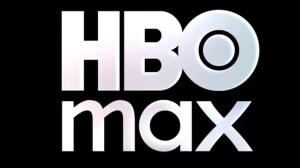
Namor often feels like the Rodney Dangerfield of Marvel Comics. He has an illustrious career as a superhero, king, and defender of the multiverse, but has never held the same status as his peers. In team books he often holds a second seat. and it’s rare for him to receive a miniseries or an ongoing that doesn’t share another character’s name. Even when he encounters land-loving leaders in the comics, he tends to be treated as something less than a king or one of Earth’s mightiest mortals. Namor the Sub-Mariner gets no respect.
Videos by ComicBook.com
Even with a publication and placement history that makes him seem like an A-lister relegated to the B-list, Namor is far from a bad character. Isolating him from his traditional treatment reveals a hero who is one of the most essential Marvel Comics creations to ever be printed in four colors or more. Whether you examine the character’s real world history or his increasingly complex continuity, Namor is a superhero who helps to clarify a lot about what makes Marvel Marvel.
Now that Namor is making a big showing in Avengers and setting himself up as a central antagonist for Marvel’s premiere team, and possibly a hero in his own right for future stories, it’s worth considering who exactly Namor is at Marvel, and why he matters.
A Timely Arrival

There are three notable Marvel Comics characters who remain an important part of modern stories, despite originating from the company’s Timely Comics era. Captain America is the most prominent, while the android Human Torch has played second fiddle to Johnny Storm for a long time. Both of these characters came after the creation of Namor in Motion Picture Funnies Weekly in early 1939 though. In the narrative of Marvel Comics, Namor was their first significant character, one who has survived across 80 years of stories and remained an important figure in comic books.
Created by a Great

Marvel Comics has long prided itself on being the “House of Ideas,” showcasing iconic creators as much as characters in its origins. Fans still say names like Jack Kirby, Steve Ditko, and Stan Lee with awe considering just how much they accomplished and how quickly they accomplished much of it. Bill Everett is a name that belongs in those hallowed halls. Everett was the sole creator of Namor and a peer of Jack Kirby and Joe Simon during the Golden Age. He found a place with Marvel during its rebirth as well, co-creating Daredevil and contributing to many essential comics from the early days of Marvel Comics. Namor is the legacy of a true great, both in comic books and at Marvel.
An Outsider From the Start

Even when Namor was introduced in 1939, he stood apart from humanity. Cast between humanity and his aquatic roots, he received no love from even those he sought to save. This outsider status was not a common thing in the Golden Age when most superheroes embodied pure power fantasies. It’s also the sort of trope that would come to define Marvel Comics as many of its heroes were just as likely to be feared as they were loved. Namor hit upon this dynamic before any of his cohort and established this tone for superhero comics ahead of its time.
And a Freedom Fighter

Namor might have caused some serious damage to New York City and been loathed by most human beings on either side of the conflict, but that didn’t stop him from fighting the Axis of Evil and joining the Invaders during World War II. His shared battle with Captain America, the Human Torch, and others made it clear that for whatever moral ambiguity might exist, heroes would ultimately confront the most dastardly sources of evil. No matter where Namor goes or what he does, his legacy as a leader who opposed the Nazis is an important part of his character and the history of Marvel Comics.
A World Leader

Another important element in Marvel Comics is how often their heroes play into world politics and leadership. This is a rarity at other publishers where superheroes tend to create their own class and avoid real world issues except in “very special” issues. Marvel has historically gone the opposite direction, embroiling Captain America in the corruption of the Nixon White House back in the 1970s. Namor is a world leader as the King of Atlantis and someone who plays on important stages like the United Nations and Illuminati. He also doesn’t hesitate to confront global issues like climate change with the special flare that only a superhero can bring.
And a Mutant

In spite of all his personal and geopolitical power, Namor has also been defined as an outsider and figure of oppression due to his mutant heritage. The retcon of making Namor one of Marvel Comics’ first mutants provided a strong link between this loner and a group defined by their status of being hated and feared. This contrast plays to both the soul of Namor as a hero and the very nature of Marvel Comics, interweaving multiple stories to make them all a bit stronger.
Sometimes a Villain

When Namor returned to Marvel Comics in Fantastic Four #4, it was as a villain, someone distraught at the destruction of his undersea kingdom and seeking revenge. He would regularly team up with Doctor Doom before eventually objecting to his companion’s means or ends. Namor’s version of villainy is not always justifiable, but always understandable. His motives and emotions feel deeply human and expose the duality of man, a complexity that Marvel Comics has prided itself on since Fantastic Four #1 built the universe around four very flawed heroes.
Ultimately a Hero

The truth about Namor though is that he ultimately possesses a heroic soul, no matter how much he may struggle with defining the right thing. This battle between good and evil, and the ultimate resolution for good, was a central point in Jonathan Hickman’s epic Avengers run. Namor was cast as an antagonist for much of the story, but when the multiverse was at risk he worked alongside his greatest rival, the Black Panther, to fight for every life. It’s this final dedication to doing the right thing that defines Namor and, in many ways, Marvel Comics’ perspective on what makes a hero.








